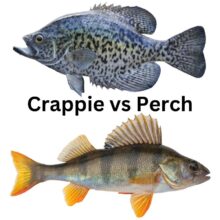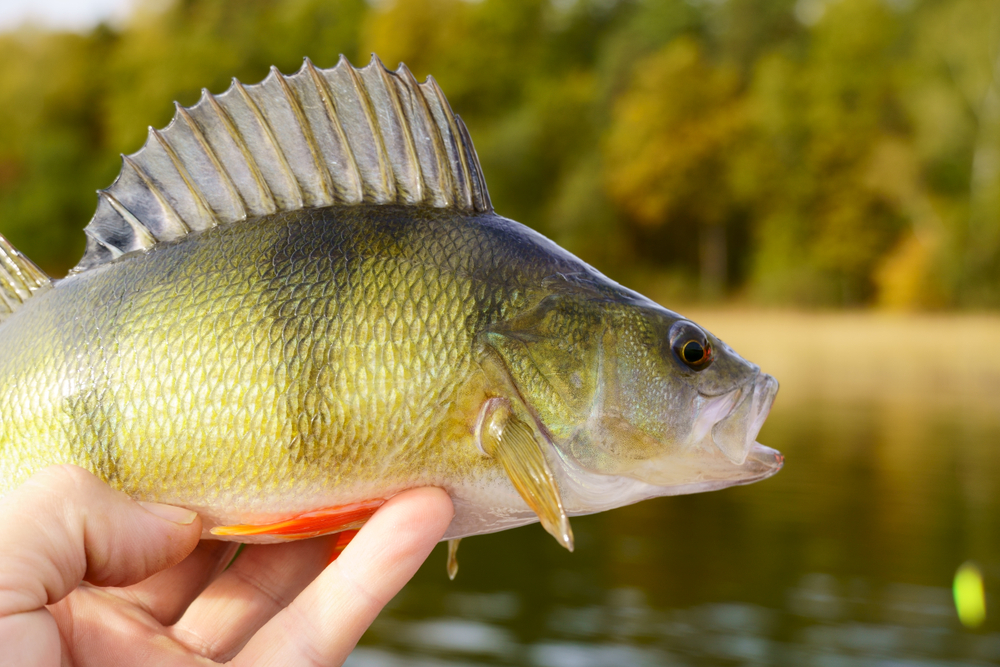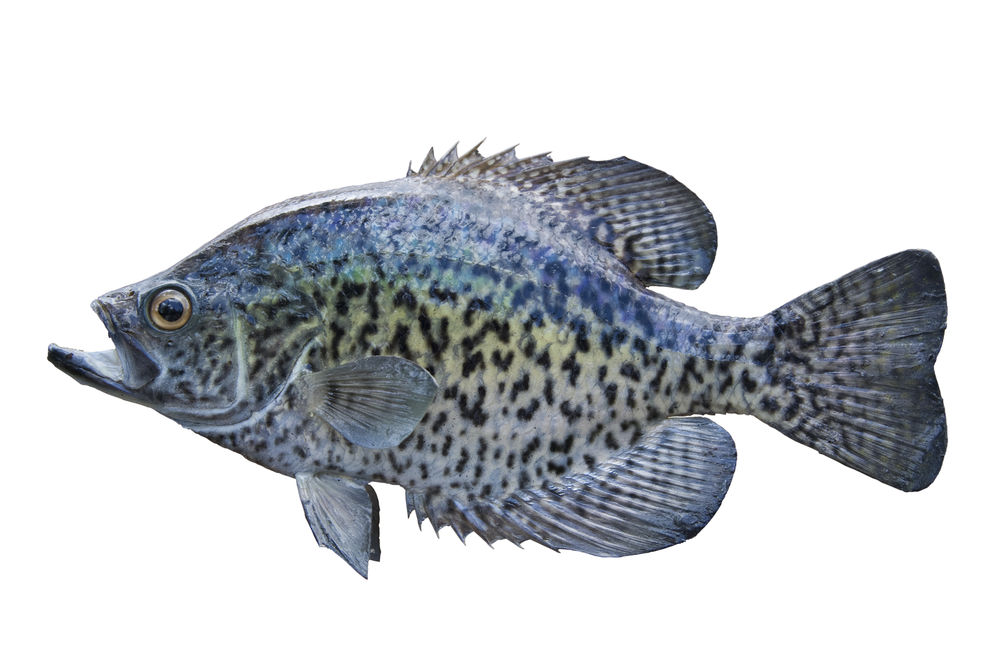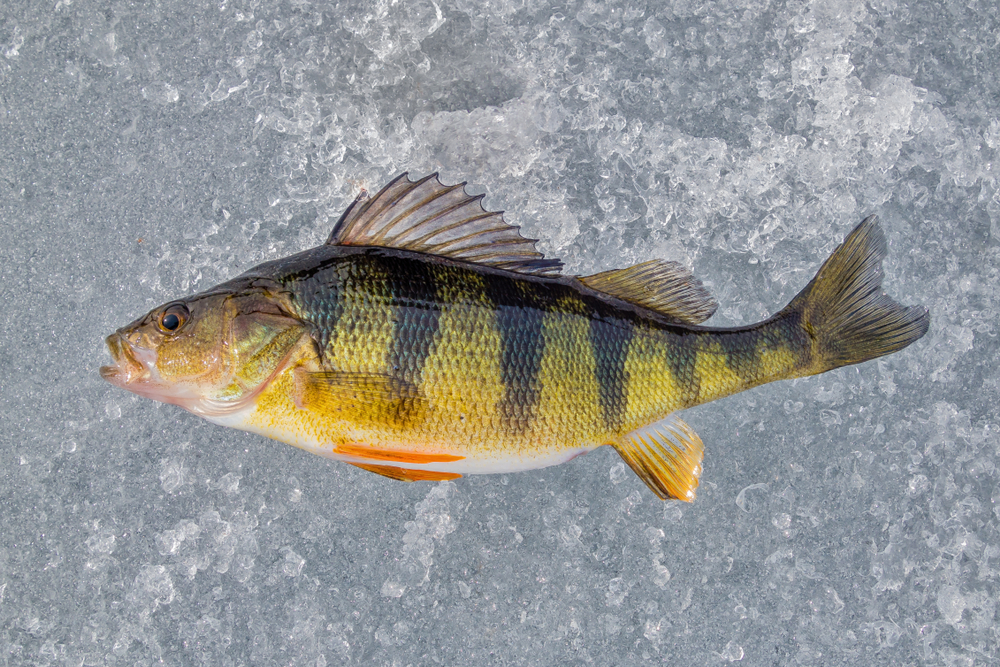This article may contain affiliate links. If you make a purchase after clicking on a link we may earn a small commission at no extra cost to you. As an Amazon Associate, I earn from qualifying purchases.
Crappie vs Perch – What’s the Difference?

There is a long-standing debate between freshwater anglers as to which species makes better table fare—crappie or perch.
Both of these fish live in relatively the same types of environments and target the same kind of prey throughout most of the year. While their behavior and characteristics are very similar, their physical appearance is vastly different.
If you’re an angler that’s looking to learn the difference between crappie vs perch, we’ve compiled this article as a guide to help explain some of the major differences for both species.
Crappie vs Perch Overview
Based solely on the physical appearance, crappie and perch couldn’t be more different. Yet, these two species are some of the prime targets for freshwater anglers across much of North America.
The reason why so many anglers want to catch crappie or perch (or both) is mostly due to the fact that they are excellent table fare. The meat of crappie and perch offer a mild, sweet flavor that comes in a flaky texture, which is said to be the best of any freshwater fish species in the United States or Canada.

If you’re fishing for crappie or perch in an area where both species reside, odds are that you’re going to catch both as they are known to eat relatively the same kind of prey for much of the year. Crappie are known to live in deeper water for much of the year while perch tend to prefer more shallow regions of large lakes and reservoirs.
Both perch and crappie will spend much of their day in a school of their same species. Where you catch one crappie or perch, you’re very likely to find others nearby or in the same exact location. In the following sections, we’ll explain more about each species, as well as their behavior, habitat and when they spawn.
Crappie Overview
Crappie are said to be one of the most highly-prized fish found throughout the United States. They are part of the Sunfish family, but these great-tasting fish are known as ‘panfish’ due to the fact that they are outstanding table fare and their fillets and body profile is the perfect size to fit into most frying pans.
Anglers from the Deep South all the way up into the Great Lakes region and into Canada love to catch crappie for various reasons that include their filet quality.

Found mostly in large lakes and reservoirs, crappie tend to live in sections of these waterways that offer some type of deep water cover such as brush piles, logs, standing timber, rocks and other structures. There are two types of crappie that include black and white crappie, both of which are virtually identical outside of their color pattern.
During times of extreme heat or cold, crappie will retreat down into the deep water sections of these bodies of water that offer cover in depths greater than 20 feet deep. When the outside temperature is less harsh during the fall, they are known to be in more shallow portions of these lakes.
Crappie spawn in the spring and this time of year is widely considered to be the best season for catching these types of panfish. They will migrate from their deep water abodes in early spring and will congregate in shallow cover that’s less than 10 feet in depth.
There is a saying throughout much of the United States that crappie spawn with the pink dogwood trees are in bloom and this rings true for sections of the country where these trees are located around large lakes and reservoirs.
Perch Overview
When most anglers throughout North America speak of perch, they are almost always talking about the yellow perch species, which is known scientifically as perca flavescens.
These fish are also known as panfish, yet they are part of the Perch family that includes vastly different fish species than that of the Sunfish family. The yellow perch is actually known as a semi-anadromous fish species, which means it is capable of living in both freshwater and brackish sections of rivers that join the ocean.

They are one of the smaller species of freshwater fish you’ll find throughout North America, but perch are known to put up quite a fight against a rod and reel. These fish will reach a size that’s comparable in weight to crappie, but is usually very different in terms of their body shape and profile.
Crappie prefer waterways that offer little to no current while perch usually like to spend their time in water that has a noticeable current.
Also Read: Bluegill vs Perch
During the cold weather months of the year, perch are known to venture down into the deeper parts of the lake or river water columns where they live. However, they will always begin their ascent back into shallow water when the outside temperature warms and the water heats up to at least 65 degrees.
Perch have spawning rituals that are different to that of the crappie and anglers often pinpoint this time of year to take place anytime from February or May.
Size Difference Between Crappie and Perch
As we’ve touched on earlier, crappie and perch do share a relatively similar body-weight when compared to one another, but their overall shape and profile is very different. Crappie have a more rounded shape while perch are known to be longer and have a head and tail that tapers down and narrows.
Crappie often measure about 4 to 10 inches in length and will reach 12 or 13 inches at full maturity. They will weigh in around 1 or 2 pounds in places where they are able to enjoy a long growing season, as well as an optimal diet. The world record crappie is a 5 pound, 7 ounce monster that was caught in Tennessee in 2018.
Perch usually grow to about 7 to 10 inches and their weight is often around 1.5 to 2 pounds in optimal conditions and with a well-rounded diet. Any perch that weighs more than 2 pound is considered to be a trophy-size fish and the world record is a 4 pound, 3 ounce giant that was caught in 1965.
Differences in Crappie and Perch
The major differences in crappie and perch might be obvious to experienced anglers, but it’s easy for beginners and novice anglers to confuse these two panfish species.
Here are some of the methods you can use to tell each species apart from one another.
Color
The most striking difference between crappie and perch, when compared side-by-side, is their color pattern. The crappie, whether it’s a white or black crappie, will have a white and black coloration that is often described as a ‘salt and pepper’ look.
The perch, on the other hand, has a vibrant range of colors that include deep green along their upper backs, a dark green vertical stripes along the sides and amber-yellow or yellowish-orange on their belly. The pectoral fins of the perch are usually brightly colored.
Body Shape and Profile
We’ve already noted the difference between crappie and perch as it relates to their body shape and profile, but it’s a point that bears mentioning again when referring to the major differences between these two types of fish.
Crappie will always have a body that’s more rounded in shape and their body will also be more flat, which means their filets are usually very thin.
Perch are known to have a body shape that’s built for speed and chasing down prey. Their bodies are more elongated and will usually appear to be a long, skinny fish during the juvenile stage while the mature yellow perch often have a noticeable bulging belly with a longer, tapering nose and tail.
Spawning Habits
One of the other major differences between crappie and perch that should be noted is the spawning rituals of both species.
Crappie are known to spawn earlier in the spring while perch usually wait until the water warms up to a more considerable degree in most lakes or rivers where they are found. Crappie like to spawn in water that’s roughly 4 to 8 feet of water in the backs of coves on large lakes and reservoirs.
The perch spawn often varies depending on where these fish are found throughout the United States. In the southern regions, they are able to enjoy warmer water temperatures earlier in the year and are known to spawn as early as February in some parts of the country.
In sections further north, the perch will have to wait until the cold air loosens its grip and the water temperature finally warms up to at least 45 degrees.
Conclusion
Anglers with more experience will often develop a better understanding of the differences between crappie and perch, but this article can serve as a handy guide to beginners looking to become better-acquainted with comparing the two. Using the tips we’ve provided here, you should have a greater understanding of how crappie and perch are different and you can use that knowledge on the water.
